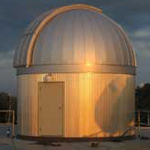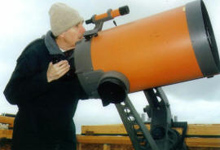Campus Facilities
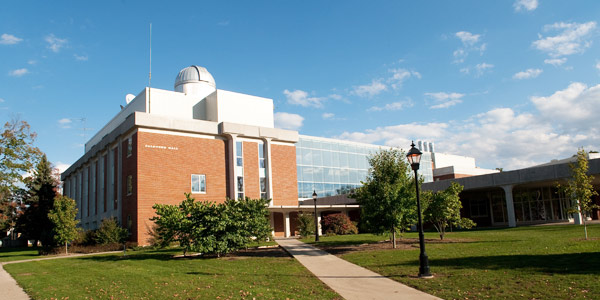
Palenske Hall houses the Physics, Earth and Environment, and Mathematics and Computer Science departments. It is one of the three buildings in Albion College’s Science Complex, originally completed in 1969, renovated in 2006, and named for Fred C. Palenske.
The department has fully equipped instructional laboratory spaces for introductory physics, electronics, and advanced projects. Students have keycard access to a student room and some laboratory spaces. In addition, the Science Complex has many small lounge and study areas that are ideal for studying, interacting with faculty, or just hanging out.
Major instrumentation includes a cryogenic photon counting lab, a thin film deposition chamber, a 5 kV ion-atom accelerator, a low-level nuclear gamma ray counting system, a 14-inch Celestron telescope with CCD cameras, numerous smaller telescopes, and a historically significant Alvan Clark telescope.
Observatories
Laboratory Facilities
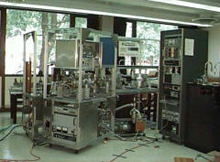
Over the past few years the department has upgraded the laboratories with networking and computer-assisted apparatus.
A “portable” photodetachment apparatus (pictured at right) was transported to Albion from the University of Toledo. The apparatus has a low energy (50 kV) accelerator, with a hot filament ion source and charge-exchange chamber for making negative ions, which are then energy analyzed. Several students have worked with Professor David Seely on this apparatus.
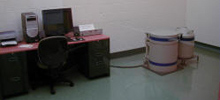
Part of the Dow Interdisciplinary Analytical Instrumentation Laboratory is a Low-level Gamma-ray Spectrometer (pictured at right). The spectrometer consists of a high-resolution, high-efficiency germanium detector, environmental radiation shield and counting system. The spectrometer is used in studying environmental radiation and in ongoing studies of calibration of gamma-ray detectors. If you have questions about our facilities and equipment, please contact us.


